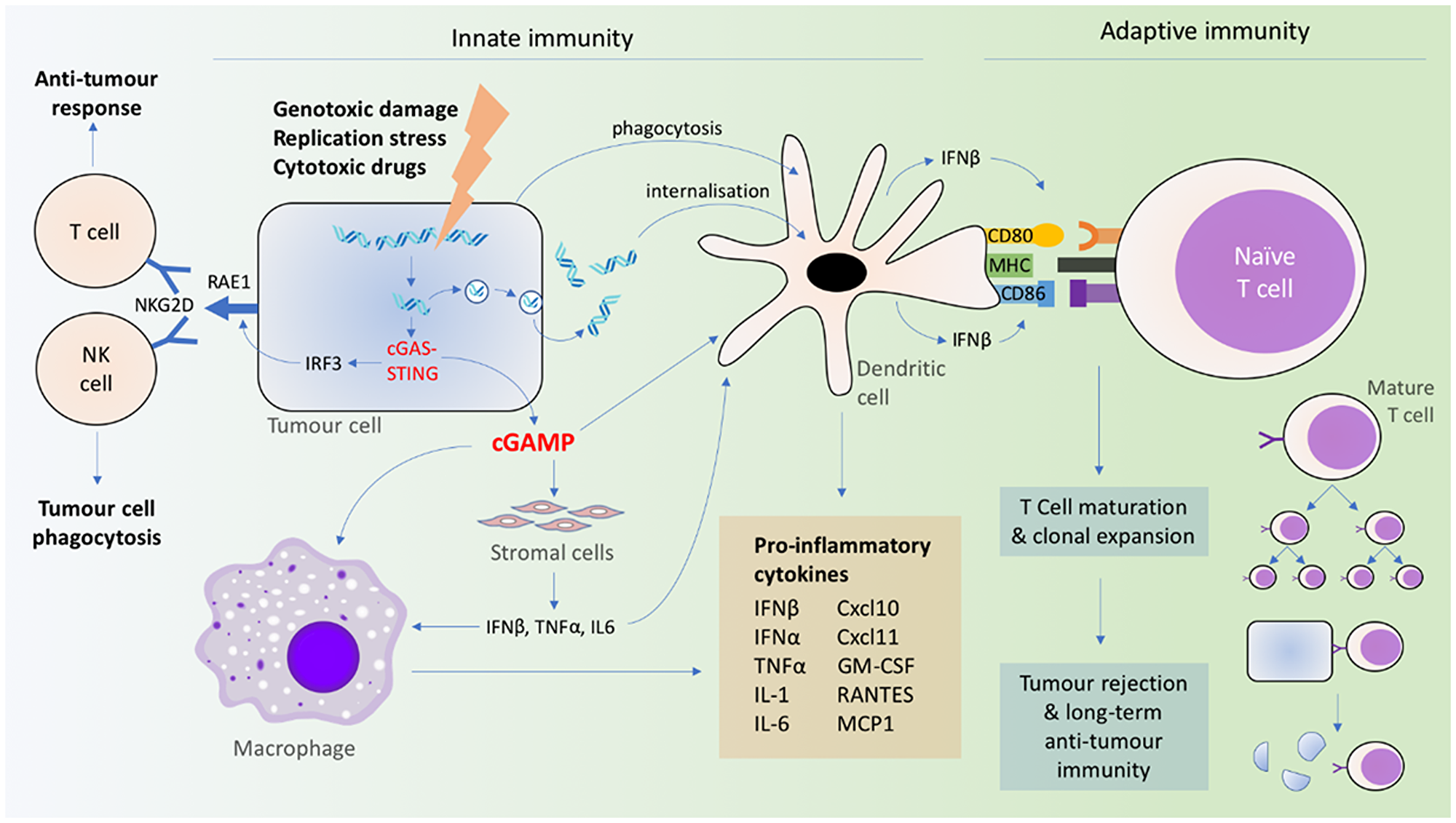Oncotarget: cGAS-STING pathway in oncogenesis and cancer therapeutics
FOR IMMEDIATE RELEASE
2020-07-28
Oncotarget Volume 11, Issue 30 reported that recent evidence shows that the host innate immunity is also critical in sensing the presence of cytoplasmic DNA derived from genomic instability events, such as DNA damage and defective cell cycle progression.
This is achieved through the cyclic GMP-AMP synthase /Stimulator of interferon genes pathway.
Here the Oncotarget authors discuss recent insights into the regulation of this pathway in cancer immunosurveillance, and the downstream signaling cascades that coordinate immune cell recruitment to the tumor microenvironment to destroy transformed cells through cellular senescence or cell death programs. Its central role in immunosurveillance positions the cGAS-STING pathway as an attractive anti-cancer immunotherapeutic drug target for chemical agonists or vaccine adjuvants and suggests a key node to be targeted in a synthetic lethal approach.
They also discuss adaptive mechanisms used by cancer cells to circumvent cGAS-STING signaling and present evidence linking chronic cGAS-STING activation to inflammation-induced carcinogenesis, cautioning against the use of activating the cGAS-STING pathway as an anti-tumor immunotherapy.
A deeper mechanistic understanding of the cGAS-STING pathway will aid in the identification of potentially efficacious anti-cancer therapeutic targets.
"A deeper mechanistic understanding of the cGAS-STING pathway will aid in the identification of potentially efficacious anti-cancer therapeutic targets"
Dr. Brandon Yi Da Hoong and Dr. Ee Sin Chen from The National University of Singapore said, "When functioning properly, the immune system protects the body against disease and pathogenic attack."
The first line of defense is the innate immune system, which provides nonspecific defense mechanisms, including physical, chemical and immune responses, which protect the organism against microbial insult. Specialized RNA- and DNA-sensing receptors police subcellular compartments for infiltrating foreign nucleic acids, and, upon recognition, trigger immune signaling pathways that initiate a host defense.
These changes lead to the production of type I interferon, which helps to activate the second line of defense, the adaptive immune response.
The innate immune system is triggered by the presence of nucleic acids in the cytoplasm through a range of pattern recognition receptors, including Toll-like receptors, nucleotide-binding oligomerization domain -like receptors, cytosolic DNA sensors, retinoid acid-inducible gene I -like helicases, absent in melanoma 2, DNA-dependent activator of IFN regulatory factors, DEAD box polypeptide 41 , IFNγ-inducible protein 16, Sm-like 14A and Sry-related high-mobility group box 2 and cyclic GMP-AMP synthase /stimulator of interferon genes pathway.

Figure 2: Coordination of innate and adaptive immune signaling resulting from cGAS-STING activation.
Of the PRRs described, this review will focus on the cGAS/STING pathway, a pathway first identified as a signaling pathway activated by double-stranded DNA during pathogenic infection.
To explore this further, here we describe the cGAS-STING signaling cascade and its extensive downstream activation channels, highlight some of the triggers for pathway activation, outline its diverse roles in carcinogenesis and anti-tumor immunity, and proposes some implications for its potential role in anti-cancer therapy.
The Hoong Research Team concluded in their Oncotarget Research Paper that this review summarizes the critical role of the cGAS-STING pathway in mediating the autophagic, innate, and adaptive immune responses to cytosolic DNA arising from tumor cells.
While there is great potential for using cGAS-STING agonists as anti-cancer agents, their use as clinical therapeutics should proceed cautiously due to the risk of tumorigenesis associated with chronic cGAS-STING activation and non-canonical downstream signaling. Defining the immune profile of tumors and elucidating the pathways controlling the anti- and pro-tumor effects of cGAS-STING activation will pave the way forward for its implementation in anti-cancer therapy.
Sign up for free Altmetric alerts about this article
DOI - https://doi.org/10.18632/oncotarget.27673
Full text - https://www.oncotarget.com/article/27673/text/
Correspondence to - Brandon Yi Da Hoong - brandon.hoong@u.nus.edu and Ee Sin Chen - bchces@nus.edu.sg
Keywords - cyclic GMP-AMP synthase, stimulator of interferon, cGAS, STING, interferon
About Oncotarget
Oncotarget is a biweekly, peer-reviewed, open access biomedical journal covering research on all aspects of oncology.
To learn more about Oncotarget, please visit https://www.oncotarget.com or connect with:
SoundCloud - https://soundcloud.com/oncotarget
Facebook - https://www.facebook.com/Oncotarget/
Twitter - https://twitter.com/oncotarget
LinkedIn - https://www.linkedin.com/company/oncotarget
Pinterest - https://www.pinterest.com/oncotarget/
Reddit - https://www.reddit.com/user/Oncotarget/
Oncotarget is published by Impact Journals, LLC please visit http://www.ImpactJournals.com or connect with @ImpactJrnls
Media Contact
MEDIA@IMPACTJOURNALS.COM
18009220957x105
Copyright © 2025 Rapamycin Press LLC dba Impact Journals




